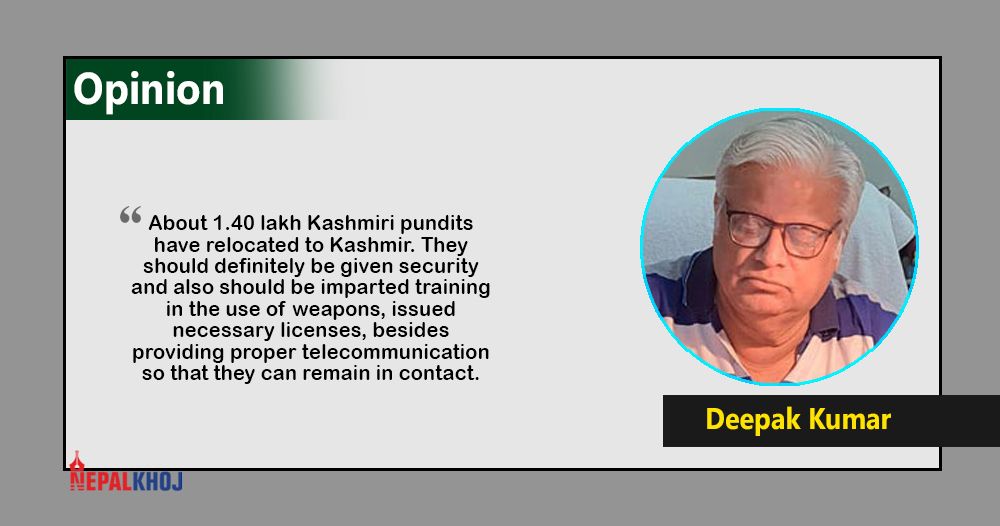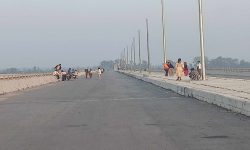Deteriorating Situation of Kashmir

The situation in Kashmir Valley is rapidly sliding to that prevailing in 1989 due to target killings. It appears that antinational forces have reactivated themselves by reorganizing in a renewed manner. The purpose of the killings appears to cleanse Kashmir Valley from non-Muslims.
It might be remembered that when non-Muslims began to be massacred in 1989, then the government had evacuated them from villages to camps in district headquarters and later sent them to Jammu. The same is happening today. They are being told to gather in district headquarters. This means that the present government, just like the then government, has accepted that they cannot provide security to non-Muslims.
The present government is more patriotic and tough compared to that of VP Singh. Then, question arises is why it has been unsuccessful in providing security?
Recently, in reply to a Question in Rajya Sabha, the minister stated that, after abolition of Article 370, that is, between August 2019 to April 2022, 87 citizens and 99 security personnel have been slained, whereas between 2014 to 2019, 177 citizens and 407 security men lost their lives.
If you see the history of Kashmiri Pundits, then it is noticed that they have preferred to flee rather than putting resistance, although they should have fought for their rights. Even today, despite government assurances and friendly administration, they are leaving their homes, including requests from the local police to not do so. You may like to see their history till date vis-à-vis that of Guru Teg Bahadur Singh.
If you try to analysis the sphere of influence of terrorists, then it is seen to cover 72 lakh population spread over 1600 kilometers in 10 districts of Kashmir Valley (which are small in size) out of which 97-98% population is that of Muslims and 1.50% is that of Hindus and 0.80% that of Sikhs. Moreover, to control the situation, 3.3 lakh army personnel and paramilitary forces have been deployed. In addition to this, one lakh men of Jammu and Kashmir police are also there. On the contrary, former prime minister of Pakistan, Imran Khan, had put this number to 9 lakhs. It appears that the the position of patriotic Hindutva government with strong will is same as that of the previous governments.
The government is required to rethink on its public policies and strategy of the security agencies. We need to win over Kashmiri people and at the same time, try to bring collaborationist organizations to Constitutional mainstream and associate them with development. And those who do not relent, they should be left to be dealt by security forces. Remember, how terrorism in Mizoram under Lal Denga, Punjab (Congress came to power as a result of boycott of Akalis), and student agitation in Assam ended. There was foreign hand in these movements too and it is so, even today. Merely saying that Pakistan is behind these activities will not do.
About 1.40 lakh Kashmiri pundits have relocated to Kashmir. They should definitely be given security and also should be imparted training in the use of weapons, issued necessary licenses, besides providing proper telecommunication so that they can remain in contact. Their percentage was 6% in 1947, which has reduced to 1.50% in the Valley now. Not everybody has been massacred. Till now, not more than 200 to 250 Kashmiri pundits have been killed as per government records.
We also need to appoint a “people-friendly” governor to get support of the local population. Efforts should be made to find solutions to their local problems. If we impose curfew for 51 days continuously, then who will support us? This needs to be mulled.
Similarly, there are many agencies active in Kashmir, such as RAW, army, police, IB and many others. How will coordination between them be ensured? Who will analyses it? These agencies are marred with professional rivalry and vanity of professional supremacy. How to deal with these issues? We need to have a governor who thinks independently, is people-friendly, and understands the functioning and administrative complexities of these agencies well. Only then we will be able to find a permanent solution to this problem.








Comments